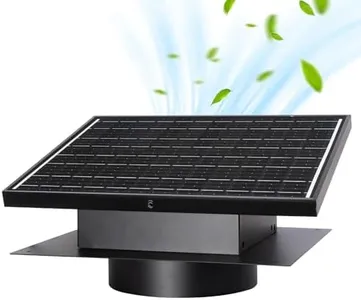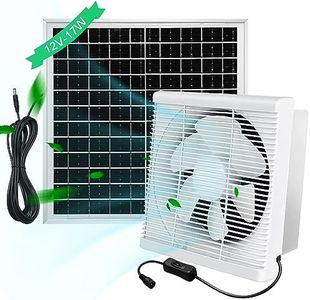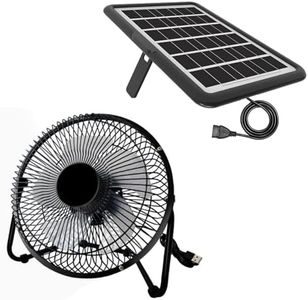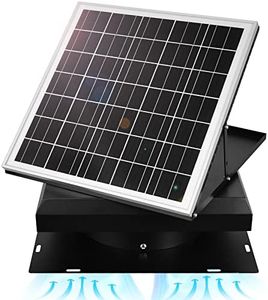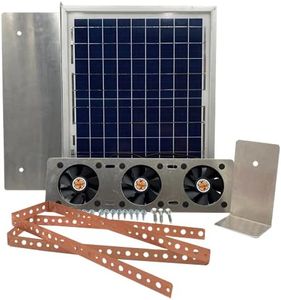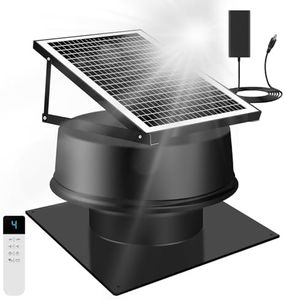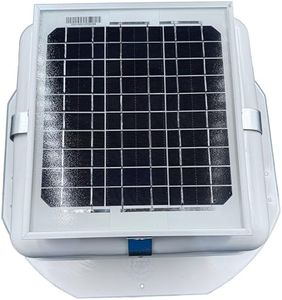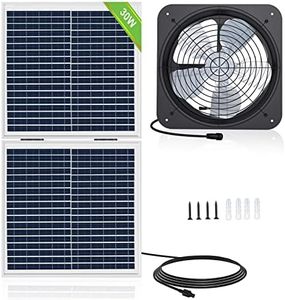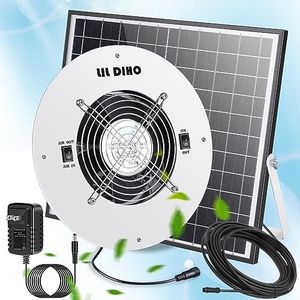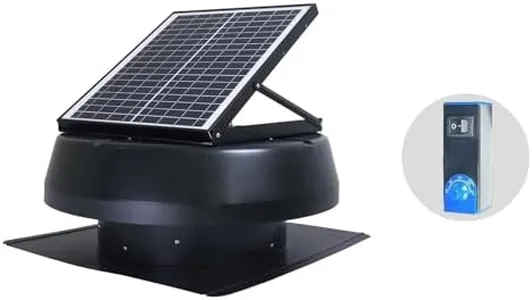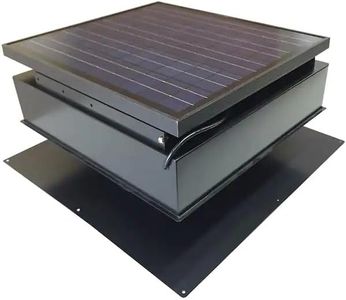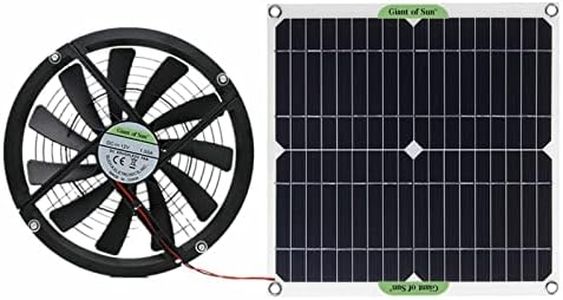We Use CookiesWe use cookies to enhance the security, performance,
functionality and for analytical and promotional activities. By continuing to browse this site you
are agreeing to our privacy policy
10 Best Solar Attic Fans
From leading brands and best sellers available on the web.By clicking on a link to a third party's website, log data is shared with that third party.
Buying Guide for the Best Solar Attic Fans
Choosing the right solar attic fan can improve your home's ventilation, help regulate attic temperatures, and potentially reduce the load on your air conditioning. The main goal is to match a fan to your attic's size and needs while considering your climate and roof type. Carefully reviewing the key specifications helps you pick a fan that efficiently moves air, fits your attic space, and is easy to maintain.Solar Panel WattageSolar panel wattage refers to the power the attached panel can generate from sunlight. This matters because higher wattage means the fan can operate at higher speeds and in lower light conditions, ensuring better ventilation. Solar attic fans typically come in wattages ranging from around 10 to 40 watts. For smaller or moderately warm attics, lower wattage may be adequate, while larger or hotter attics benefit from fans with higher wattage. Consider the placement and exposure of your fan to sunlight—shaded roofs might need higher wattage panels to perform well throughout the day.
Airflow Capacity (CFM)Airflow capacity, measured in cubic feet per minute (CFM), indicates how much air the fan can move. It's crucial because it directly affects how efficiently hot air is vented out of your attic. Fans usually range from around 500 to 1600 CFM. A smaller attic (up to 1000 square feet) may only need a lower CFM, while larger or multi-story homes will require higher CFM to be effective. To choose the right capacity, estimate your attic size and look for a fan that is rated to cover at least that area.
Adjustable Solar Panel MountSome solar attic fans feature adjustable mounts for the solar panel, allowing you to change the angle to capture more sunlight throughout the day. This is important in maximizing efficiency, especially if your roof doesn’t face south or if you live in regions with variable sunlight. When selecting a fan, think about your roof’s orientation and whether a fixed or adjustable mount better suits your situation. An adjustable panel can offer better year-round performance, especially in climates with lower sun angles.
Thermostat and Humidistat ControlsSome fans come with built-in thermostats or humidistats, which allow the fan to turn on or off automatically depending on attic temperature or humidity. This feature increases energy efficiency and ensures the fan operates only when necessary. For users in regions with high humidity or dramatic temperature shifts, having these controls adds convenience and can help manage attic conditions better. Choose a fan with these controls if your attic experiences temperature or moisture extremes.
Installation Type (Roof or Gable Mount)Solar attic fans are typically installed either directly on the roof or on the gable wall of the attic. Roof-mounted fans sit flat or at an angle on the roof, while gable-mounted fans install in existing attic vents. The best type depends on your roof’s layout and attic structure. If you have a suitable gable end vent, installation might be easier with a gable-mounted style. For attics without vents, roof-mounted fans offer more flexibility for placement and coverage.
Noise LevelThe noise a fan produces when running can impact your comfort, especially if your attic is near living areas or bedrooms. While solar attic fans tend to be quieter than electric ones, there can still be differences. If a quiet environment is important to you, look for fans advertised as low noise or check for customer reviews mentioning noise levels. Choosing the right noise level is particularly important for homes where attics are directly above common living spaces.


